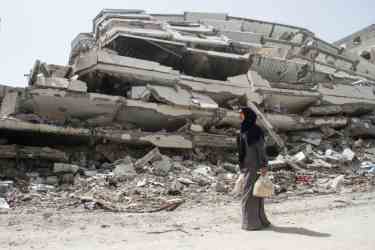
Rising Heat Waves In Peshawar: A Looming Threat
Impact of Climate Change and Heat Stroke
Senior Dr. Harma of Lady Reading Hospital's General Medical Ward in Peshawar states that heat stroke incidents are also rising due to significant issues like climate change. She warns that heat stroke can be fatal. The increase in temperature has not only caused climate change but is directly impacting human health.
Dr. Harma explains that heat stroke is often underestimated but is a serious issue, especially in the summer. Working in the sun or dehydration can lead to heat stroke. Symptoms include headache, fever, body aches, diarrhea, eye swelling, rashes, and dizziness. Immediate medical consultation is crucial for timely treatment.
Understanding Heat StrokeHeat stroke is a medical emergency where the body's temperature rises above its core temperature. This severe form of heat-related illness can damage the brain, heart, kidneys, and other organs.
Also Read: Women Drivers in Pakistan: Battling Everyday Bias and Harassment
Without timely treatment, heat stroke can be fatal. Dr. Harma advises that if immediate treatment is unavailable, affected individuals should be given ORS, drink more water, and use wet cloths on the head and feet. Children and the elderly are particularly vulnerable because they cannot regulate their body temperature effectively.
Proper clothing is essential to allow sweat evaporation and prevent a rise in body temperature. It is advisable to stay indoors, use umbrellas when outside, and keep hydrated to avoid heat stroke.
Preventing Heat StrokeDr. Harma emphasizes that symptoms like headache, fatigue, heart palpitations, muscle spasms, and pale skin due to sweating should prompt immediate medical consultation. Elderly individuals often become unconscious in such situations, and women are frequently brought to the hospital in a semi-conscious state. Protecting oneself and family by staying indoors and avoiding unnecessary exposure to heat is vital to prevent heat stroke.
Women should use sunglasses and umbrellas when venturing outside. Providing a swimming pool or tub at home for children to play in can also help. Drinking two to three liters of water daily helps maintain body temperature and improves blood circulation, benefiting the face, skin, kidneys, and bladder.
Consuming fresh, low-calorie foods during summer is advisable. Since food spoils quickly in the heat, fresh food is preferable. Spicy foods increase sweating, depleting energy levels.
Personal Account of Heat StrokePeshawar-based Abid Jan, a goldsmith in the inner city market, experienced fever and headache due to the heat. He reported excessive sweating and body pain. After visiting the hospital, he was treated with a drip and prescribed medication. The doctor advised him to rest and avoid excessive heat and water consumption. Many individuals like Abid Jan suffer from heat stroke and require timely medical attention.
Weather Changes in PakistanDirector of the Meteorological Department Peshawar, Dr. Muhammad Faheem, reports that abnormal rainfall followed by sudden drought and extreme heat indicates climate change. The International Panel on Climate Change (IPCC) predicts South Asia, particularly Pakistan, will experience longer heat waves and increased rainfall.
This year, the intensity of heat waves has increased compared to previous years. Last month, there was a heat stroke episode from May 21 to May 27, lasting longer than the typical two or three days. This year, the temperature in southern districts like Dera Ismail Khan and Bannu reached 47 degrees Celsius.
Dr. Faheem warns that high temperatures in June and July could cause glaciers in Khyber Pakhtunkhwa to melt, increasing river flow and flooding risks. There may also be heat stroke episodes in these months.
Monsoon PredictionsDr. Faheem states that pre-monsoon rains usually occur from May to June, but they have been minimal this year. However, heavy monsoon rains are expected from July 15 to August 15, which could raise water levels in streams and rivers.
Increased temperatures between July and August pose additional risks. The Meteorological Department constantly communicates with the Provincial Disaster Management Authority (PDMA) to prepare for these conditions.
Climate Change EffectsPakistan has been severely impacted by climate change over the past two decades. Alongside floods, glacier melting, erratic rains, and droughts, heat wave effects are also increasing yearly. Amnesty International recently appealed to the international community to implement large-scale measures to protect Pakistan from extreme heat.

Legal Disclaimer:
MENAFN provides the information “as is” without warranty of any kind. We do not accept any responsibility or liability for the accuracy, content, images, videos, licenses, completeness, legality, or reliability of the information contained in this article. If you have any complaints or copyright issues related to this article, kindly contact the provider above.






















Comments
No comment